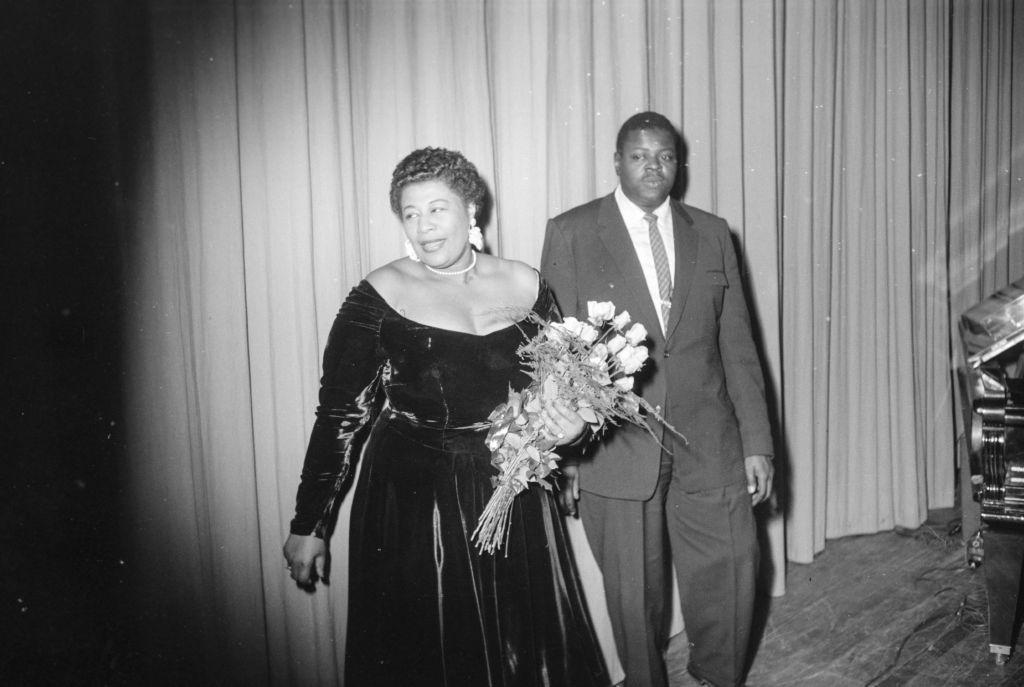Writing an arrangement was the best way for him to express himself as a musician: With his swing arrangements, Glenn Miller shaped the world of swing like no other musician.
Glenn Miller had his own vision of swing. He went a long way before he was able to present this vision of swing to a broad public: His career began not as a renowned arranger, but as a jazz trombonist in the orchestra pit.
The Glenn Miller Story
The biographical film The Glenn Miller Story (1954) suggests that it was his wife Helen Burger who encouraged Glenn Miller to pursue his vision of swing: If one follows the film, there was a phase in Glenn Miller’s life in which he eked out a living as a professional musician.
But this work did not make Glenn Miller happy: playing what others had written was not enough for him.
When he composed his first piece, Moonlight Serenade, he quickly realised one thing: it would not be enough just to compose swing pieces.
Swing, like jazz in general, is all about improvisation.
Joseph Schillinger
In those days, if one presented a bandleader with an arrangement, this bandleader always wanted to perform the piece according to his own arrangement: This was an extreme hindrance to Glenn Miller’s vision of swing.
In order to finally realise his vision across the board, Glenn Miller founded his own band. But even that was no guarantee for success: in the beginning, Glenn Miller did not appear as a bandleader, but played the trombone.
Swing, like jazz in general, is all about improvisation: The art of improvisation also defined Glenn Miller’s career as a musician. Glenn Miller learnt the basics of his craft from Russian-born music professor Joseph Schillinger (1895 – 1943), who created his own system of composition training named after him.
Moonlight Serenade
The biopic Glenn Miller Story demonstrates Miller’s talent for composition in a unique way: In the film, the day before a big opening concert, the most important trumpeter in his band injures his lip – it immediately became clear that he would be out for weeks. The plan was to perform the Moonlight Serenade, which in Miller’s original version could not do without a virtuoso trumpet solo.
After the cancellation of his trumpet player, Glenn Miller did not have many options: He decided to rewrite the entire arrangement of Moonlight Serenade overnight and turn the trumpet solo into a clarinet solo.
The Glenn Miller sound
It remains unclear whether Glenn Miller actually spent the whole night rewriting the arrangement: Normally, the clarinet and trumpet in jazz arrangements read from the same sheet of music (both are so-called B-flat instruments, so transposing is not really necessary). What is certain, however, is that the striking clarinet solo became the essential trademark of the Glenn Miller sound. Although the fictionalised scene in the film certainly doesn’t quite correspond to reality, it does give the viewer a good impression of what made Miller so special: Glenn Miller couldn’t have known that this move would lead to his triumph. He simply took the risk and dared to try something new.
The clarinet solo in Moonlight Serenade became an essential part of the typical Glenn Miller sound: before Glenn Miller, nobody seriously thought of adding a clarinet solo to a jazz piece.
Although Glenn Miller had now mainly taken on the role of bandleader, he still played the trombone. After all, these were his roots as a musician – Miller would probably never have taken on the position of bandleader if it hadn’t been the only way to bring his vision of swing to the world.
The typical “Glenn Miller sound” was born and made many music lovers “swing”.
His vision
No matter how successful Glenn Miller later became: He never forgot the beginnings of his time as a musician and bandleader. These beginnings were anything but easy for him and his fellow musicians: for a long time, it was very difficult for Miller to believe in his vision of swing, because for a long time he was the only one who believed in his vision.
This belief in his vision of swing must have become all the stronger as his first successes materialised – his music had begun its triumphal march. Between 1939 and 1941, the Glenn Miller Band was one of the most successful bands in the USA, with songs such as In the Mood, Tuxedo Junction and Pennsylvania 6-5000 being released.
The typical “Glenn Miller sound” was born and made many music lovers “swing”. The classic Glenn Miller sound was characterised by four saxophones and a clarinet.
Unexplained disappearance
In 1941, Glenn Miller decided to disband his orchestra and become involved in supporting the US troops. In this role, he entertained the US troops on the front line of the Second World War in Europe.
This ended his creative phase for the time being – the Glenn Miller sound could no longer be developed further due to the events of world history.
In December 1944, Glenn Miller disappeared on a flight over the English Channel: The exact circumstances of his disappearance have not been clarified to this day.
The legend
Glenn Miller’s relatively early death fuelled the creation of legends surrounding him and his music: an orchestra bearing his name still exists today.
The biographical film The Glenn Miller Story with James Stewart in the leading role is probably one of the reasons why the swing legend is still very well known today: When one hears the first bars of Moonlight Serenade, the listener immediately feels transported back in time.
One can only speculate about how Glenn Miller’s music would have developed under certain circumstances – the swing era peaked and ended at the end of the 1940s: would the swing era perhaps have lasted even longer with a musician like Glenn Miller at the forefront?
What remains is Glenn Miller’s vision of swing.

Cover picture: Glenn Miller during his time with the US Army, US Army Photographer
Public Domain, taken from Wikimedia Commons

 Deutsch
Deutsch






